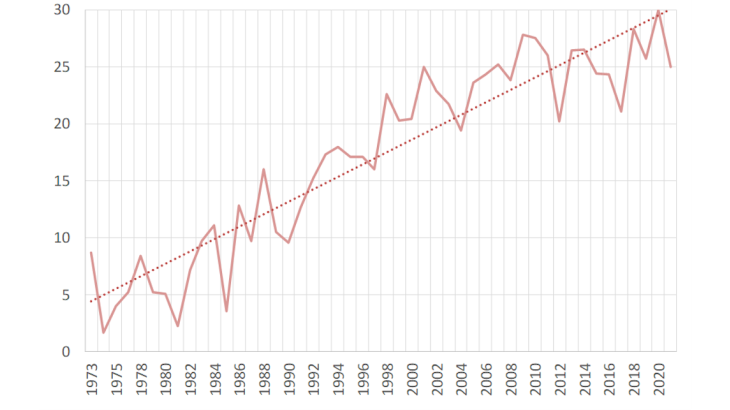Steps have been taken to increase the number of women in teaching and research, and numerous studies confirm the use of positive discrimination in economic circles throughout the world. These studies clearly show there is an awareness of gender inequality. For example, a study by Thomas Breda and Mélina Hillion finds a recruitment bias in favour of female teachers in French secondary schools. However, several recent papers on attitudes in economics research and teaching have questioned this optimistic view.
Despite a growing awareness of the issue, men and women are still not treated equally in the profession. For example, recruitment panels will often call into question the scientific quality of a female candidate’s work if it has been coauthored with a man, whereas the same is not true for male candidates. Heather Sarsons et al. find that, in the United States, the gender of a male candidate’s coauthors has no effect on his chances of promotion. By contrast, for women, papers coauthored with men have less of an impact on their chances of promotion than those that are single-authored or coauthored with another woman. Thus, when a woman coauthors a paper with a man, the academic community infers that she has made less of a contribution than her male colleague.
In addition, throughout the world, the experience of giving a research seminar is different for men and for women, as shown by data on hundreds of seminars collected by Pascaline Dupas and her coauthors. When a female researcher presenting a paper is asked a question, a male audience member will often answer without letting her speak. This type of behaviour is rare when the presenter is a man. Perhaps women need help getting their message across? The same attitudes can be found when it comes to research papers. A study by Erin Engel finds that referees and editors at the top economics journals take longer to reply to female authors. They also ask for more revisions than in the case of male-authored texts, even if a comparison of first drafts shows that the quality of the text is identical. By contrast, the published versions of papers written by women tend to be of better quality than those written by men as they are held to tougher standards by editors.
Similar attitudes have been identified in other dimensions. Letters of reference tend to describe female job candidates as “hardworking” and male candidates as “brilliant”, papers written by women tend to be cited less frequently by peers, and, worse still, in anonymous discussions on economics forums, female authors receive more comments on their appearance and personal life than on their academic work.
How can we reconcile these results with the discourse in the profession about the need to increase the number of women? The studies cited here highlight the existence of “implicit discrimination”, defined by psychologists as “subconscious attitudes that may or may not correspond to explicit attitudes”. Unlike explicit discrimination, implicit discrimination stems from social constructs that are so deeply rooted in our societies that we are unaware that we are being discriminatory. Individuals who are convinced that they want to promote women may, in reality, discriminate against them subconsciously.

